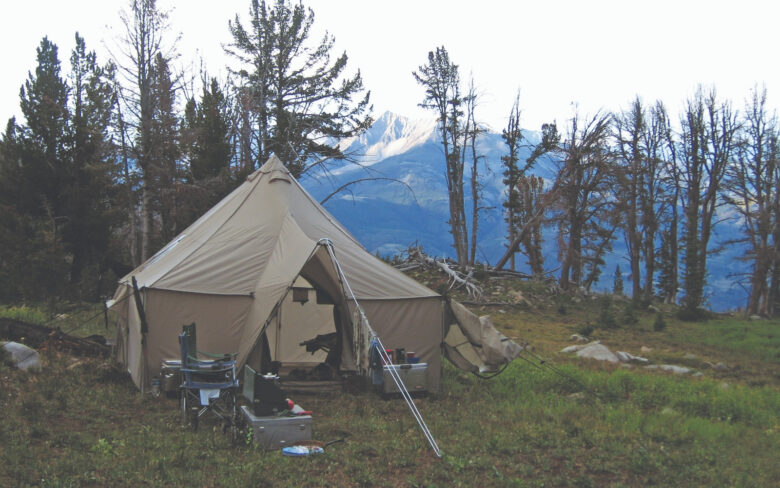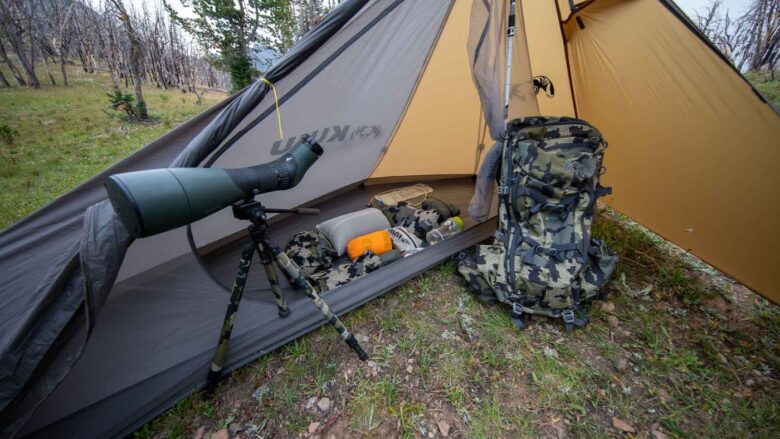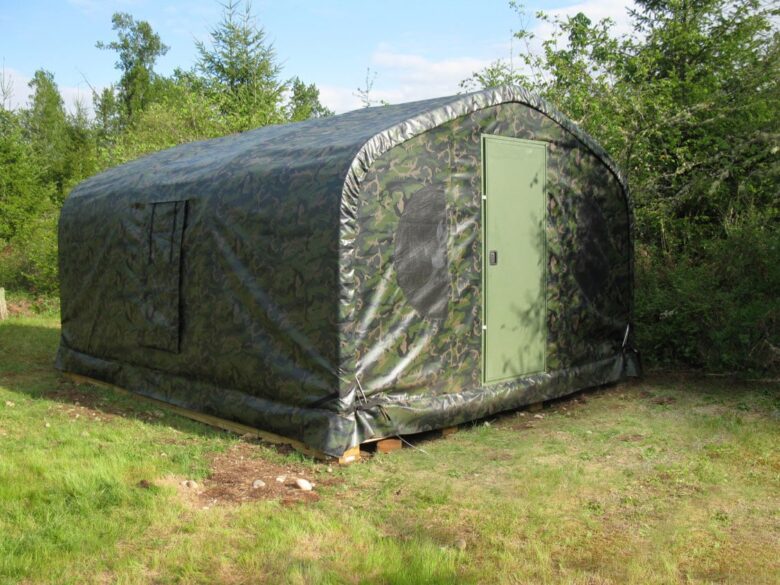If you like hunting, you need hunting tents to sleep in and get protection from the elements. During the hunting season, hunters from different places spend many nights in the hills to fulfill their hunting dreams. Before you decide on the type of tent to buy, consider your needs and budget. By choosing the right hunting tent, you avoid bad experiences.
Contents
Hunting tents
If you like going outdoors to hunt, camp, fish, or raft, consider buying a hunting tent for your trips. There are plenty of tents available that you can choose from. The most comfortable and best tent you can buy are the hunting tents, this is why they might be a little bit costly. Get hunting tents because of the following reasons:
- They are roomy. Hunting gear, people, and a stove fit in the tent.
- They are comfortable. With extra warmth and space, hunting tents are comfortable on trips.
- They are durable. The frame and the sturdy design of hunting tents make them superior when compared to normal dome tents.
- They are warmer. Hunting tents have plenty of room for stove installation.
Things to consider when choosing a hunting tent

Source: westernhunter.net
If you get your hunting tents from a local store, ask the seller to set up the chosen tent for you. Watch carefully and ensure the arcs fit properly. Avoid buying a tent that you will have difficulty installing. Find a tent that is easy to assemble and disassemble. Get a tent model that you can install a stove inside. These hunting tents have a special cut for the chimney which is treated with heat-resistant materials. Stainless steel is a good material for the stove because it is strong, lightweight, and resistant to temperatures. Wherever you go shopping for hunting tents, always consider the following:
1. Durability
The floor should be able to withstand foot traffic and the weight of your gear. Heavy hunting gear like ammo and guns can reduce the tent’s lifespan.
2. Entrance
If it is cold outside or you have an urgent issue, the tent entrance should be convenient such that no time is lost when trying to get in. To ensure a comfortable entrance and exit, the tent’s entrance should have Velcro, zipper, or swing doors. The modern zipper is made of plastic or metal. Plastic zippers are preferred because they are light and save weight. Metal zippers are more durable, but they can freeze due to winter conditions.
3. Fabric
The fabric of a single-layered awning should be waterproof and breathable. Such materials are not cheap therefore, the hunting tent will be costly. The problem with waterproof synthetic materials is that condensation forms on the walls. A competent ventilation system is required if the material is not breathable but waterproof. A single-layer tent is compact and light. Multi-layer tents have a breathable layer and waterproof awnings. Between these layers, there is air space to drain condensate formed during breathing.
Popular awnings include nylon, silicone, Polyester Ripstop, and taffeta. Mm H2O that the awnings are guaranteed to withstand determines its quality. The tent will lose shape, and its chances of getting wet are increased if the awning materials stretch. Therefore, the awning fabric should be resistant to stretching. The seams of the awnings should be glued to prevent water from entering. The inner layer of the fabric must be light, strong, and have breathable properties. The tent’s floor is susceptible to wear and tear. It should be durable, waterproof, and retain warmth well in all weather conditions.
4. Frame

Source: kuiu.com
Aluminum alloys are used because of their strength, lightness, and wind resistance. Fiberglass frames are durable and lightweight, but they are relatively fragile in the cold seasons. It is suitable for simple hikes since it is a cheap and less versatile material. Steel frames are elastic and strong, but they are also heavy. It is convenient to set up a tent with an outer frame for places with extreme conditions like strong winds.
5. Ease of setup
Pitching your hunting tent shouldn’t take long. After the hunt, you would like to spend your energy and time relaxing, cooking dinner, and checking your hunting gear for any issues. It is easy to set up a smaller tent because of its simple design and less material to work with. Get an instant tent if you want a bigger shelter, but avoid carrying it around because it is heavy and bulky.
6. Tent additions
The hunting tent should have additions like hooks, pockets, and nets. For the tent to be more functional, the vestibule should be large. During extreme conditions, the tent’s perimeter should have a wind skirt sewn around it. It offers protection against drafts, provides greater heat retention, and strengthens the tent further.
7. Size
The hunting tents look different in size compared to a tent for family camping. The chances of going hunting by yourself are high, therefore your tent should be portable and small. If you are backpacking through the wilderness, you will need a one-person tent. If you need an extra room for both you and your gear, two-person tents are perfect. The type of hunting and personal preferences helps to determine the size of the tent.
8. Weatherproofing

Source: weatherport.com
In stormy weather, a good hunting tent should keep you dry. If you buy a faulty tent that performs poorly in bad weather, you will have an unpleasant night that will force you to cancel the trip. Before buying camping gear, ensure you read reviews.
9. Weight
During hunting, you will move around often to track and follow your prey. You will either carry the tent on your back or leave it behind. A heavy tent is a good choice if you intend to leave your shelter in one place.
10. Price
Small and light tents cost more. Heavy tents are more durable if you are okay carrying lots of weight.
Conclusion
During a hunting trip, when you least expect it, a storm may pop up, and you and your gear get soaked. For a successful hunt, you need adequate shelter in case the weather shifts suddenly and it becomes dangerous. When choosing a hunting tent consider the frame, fabric, tent additions, durability, weatherproofing, size, price, weight, and entrance.
